In guidebooks, Nimes is deservedly called French Rome or Rome in miniature for the majestic monuments of ancient Roman architecture preserved there. Therefore, having arrived in Provence, my husband and I naturally followed the Roman footprints left on the streets of Nimes.
Before getting acquainted with Roman Nimes, we examined the Church of St. Baudile, near which there was an underground parking lot where we left our car. I would call the Church of St. Baudile a trap temple. Firstly, you can easily get caught guessing its age. You think you are seeing the Middle Ages and Gothic, when in reality it is neo-Gothic from the last quarter of the 19th century.
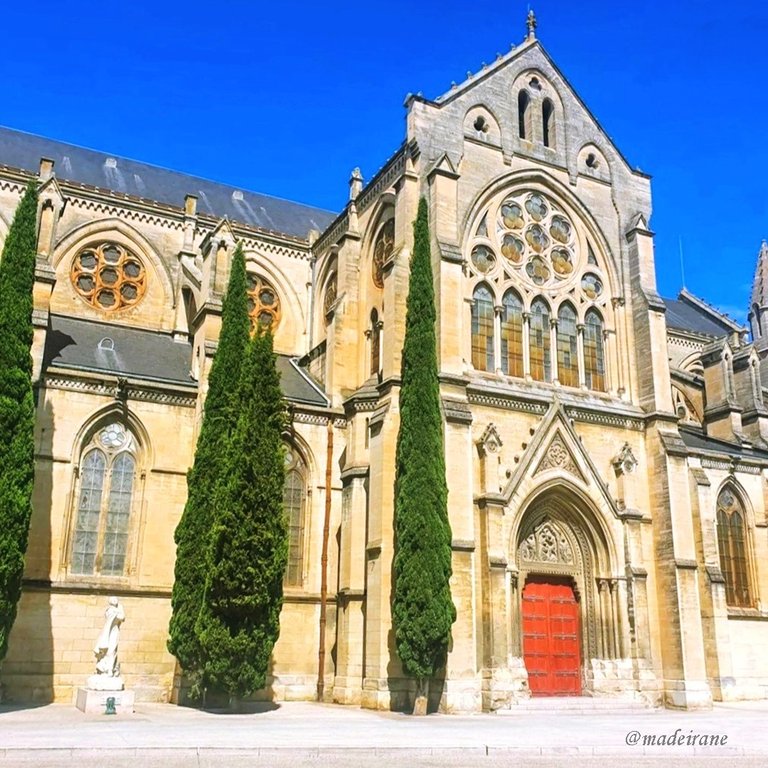
And secondly, for some reason, its interior is “driving you”. It would seem that there are quite expected stylistic features, quite predictable severity and asceticism, a completely ordinary group of stained-glass windows, but nevertheless you want to linger.
In fact, our journey through Provence was a trip through the territory of the former Roman province called Narbonese Gaul, and Nimes was its capital. And if the day before my husband and I got acquainted with Arelat (with the current Arles), then a visit to Nimes was a visit to the former Nemausus.
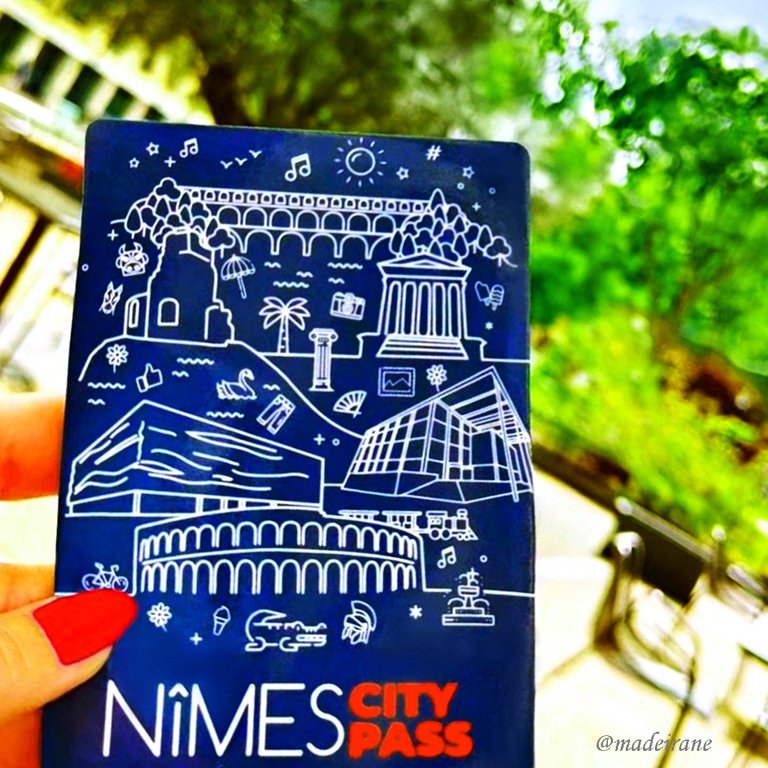
And here it is - the first Roman trace on our route... Maybe not as impressive as the subsequent ones, but still noticeable and convincing. Gate of Augustus and fragments of the ancient fortress wall. Behind the arches of these gates you can see Emperor Augustus himself - naturally, his statue. Nimes owed its capital status and prosperity to him.
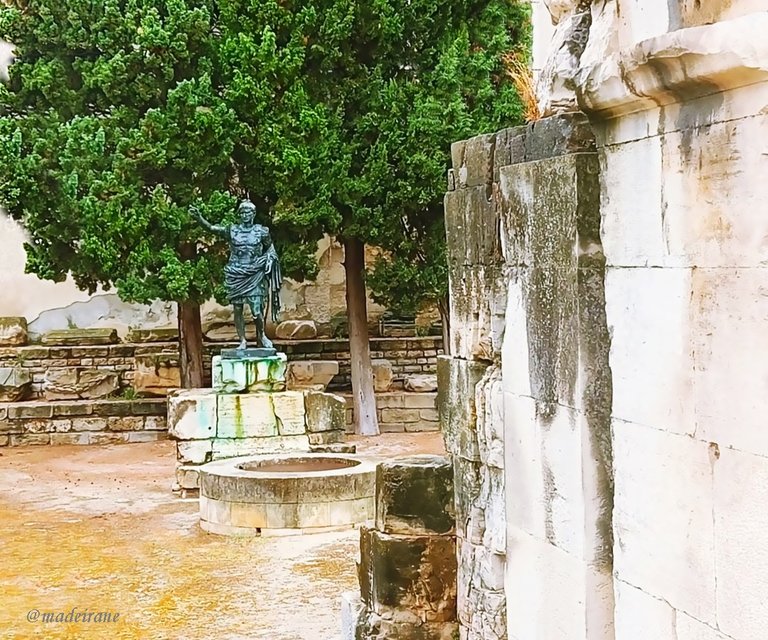
Without disturbing the peace of Octavian Augustus (I can imagine how tired he was of hundreds of eccentric and strangely dressed people from countries unknown to him), we moved towards the historical center along the street to which his hand pointed. This section of the route did not yet give any idea of Nimes as a self-sufficient territorial unit: the typical architecture of Provence was before our eyes, and the features inherent specifically to Nimes had not yet come to the fore.
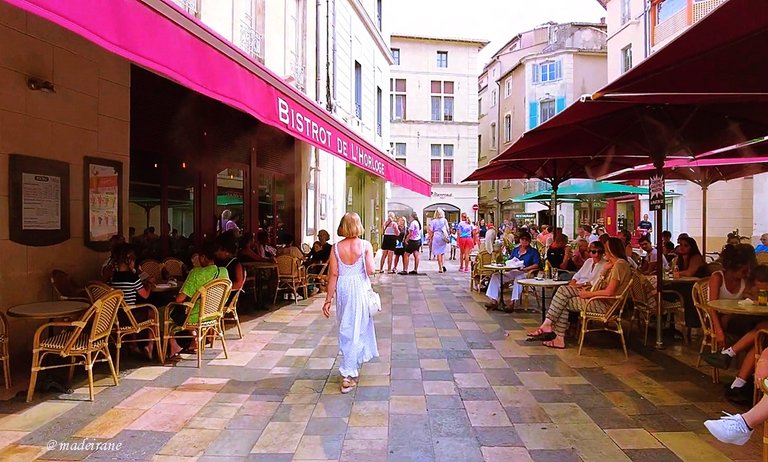
But great things awaited us. We found ourselves in the Cathedral of the Virgin Mary and St. Castor. Unlike the Church of St. Baudile, its history dates back to the 11th century, that is, it features Romanesque, Gothic, and Baroque styles.
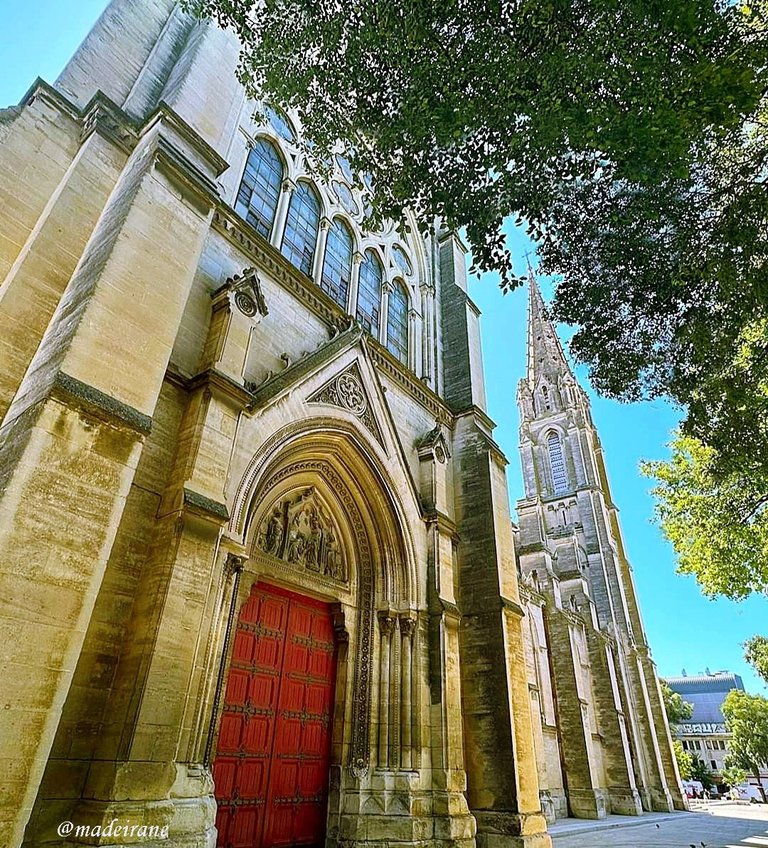
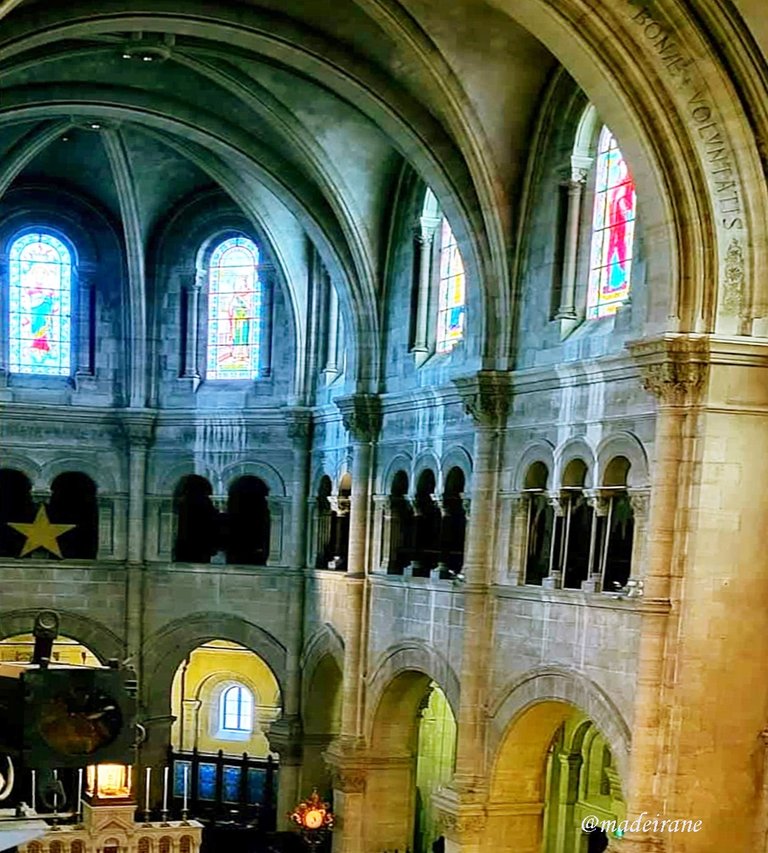
Around the corner appears one of the prides of Nimes, an excellently preserved monument of ancient Roman architecture - the so-called Square House. The square house, although de facto it is not square but rectangular, is a former temple built in honor of the deceased grandchildren of Emperor Octavian Augustus - Lucius and Gaius. The surviving ancient Roman temples in this condition can be counted on one hand.
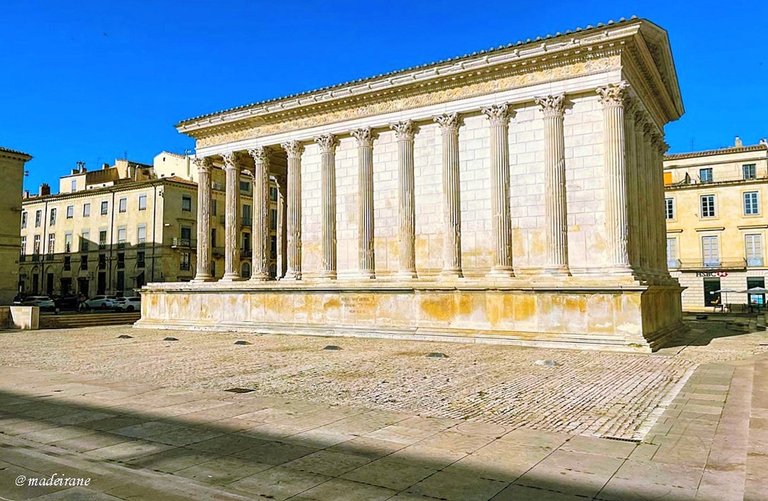
And the house, or rather the temple, is more than two thousand years old! You stand and admire the nobility of every detail: this portico, these columns, these ornaments... In my opinion, this is perfect architecture when nothing needs to be added or subtracted. Maison Carree reminds me of the famous Parisian Church of the Madeleine. And, by the way, not only Madeleine. Elements of the Maison Carree's appearance are reproduced in many French buildings of the New Age.

Remembering the post-Roman period of the existence of the Square House, I came to the conclusion that it survived primarily due to its shape. In such a building it was possible to house anything: a Christian church, a court, administrative authorities, and, unfortunately, stables. Currently, Maison Carree is used as a showroom.
And this is a greeting to the ancient Roman architects, sent from the distant future by the famous British architect Norman Foster. This building, called Carre d'Art (Art Square), houses a museum of modern art and a library.

Step by step, the appearance of Nimes emerges. It was a pleasure to walk around this city. Nimes looks like a very relaxing city.
Shady boulevards, densely planted with plane trees, stretch along the canals. Beautiful and cozy squares with interesting fountains. Houses with elegant wrought iron balconies and window bars. The harmony of the existence of old and new. Almost no shocking bad taste. And, despite the presence of a considerable number of visitors, there is a complete absence of fuss.
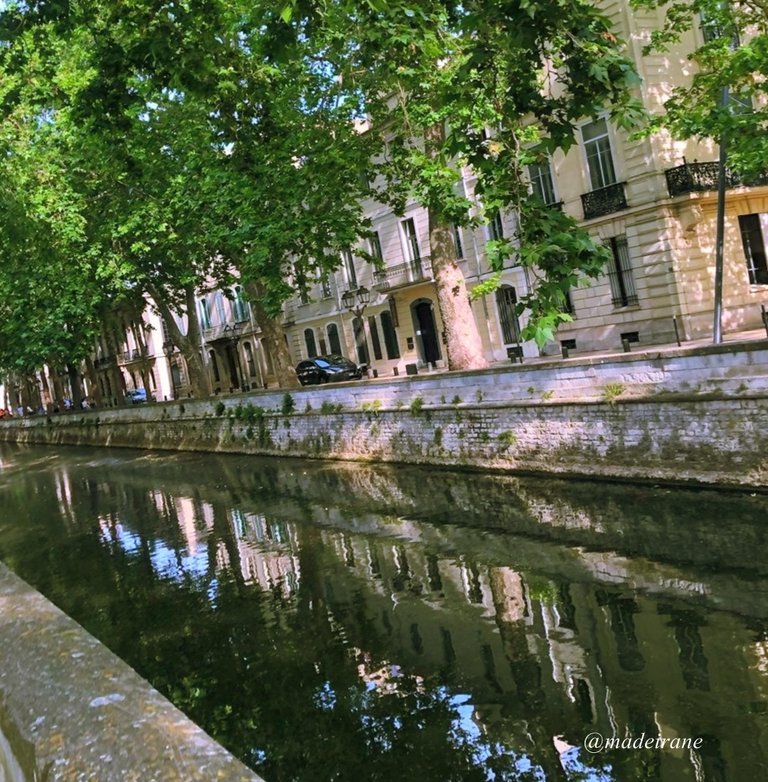
Without hesitation, I give first place in the list of the most pleasant corners of Nimes to the Garden of Fountains:
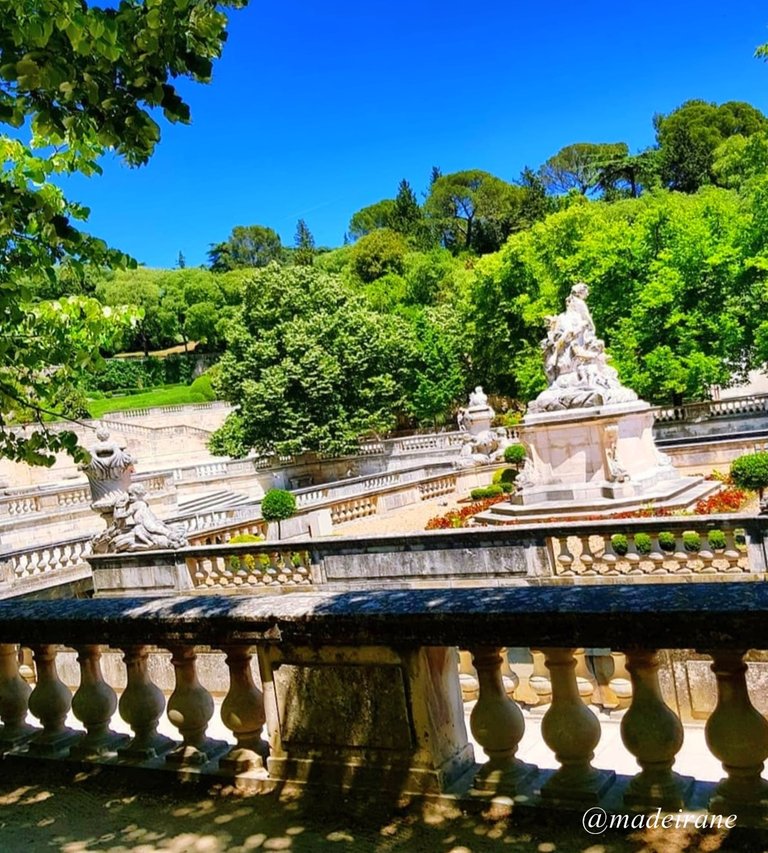
The Fountain Garden is the intersection of the architectural traditions of the ancient era and the landscape design of the 18th century. “From the Romans” it contains the ruins of the Temple of Diana, dating back to the 2nd century (note that according to another version, this is not a temple, but the ruins of a thermal bath) and high on the hill is the Magne’s Tower.
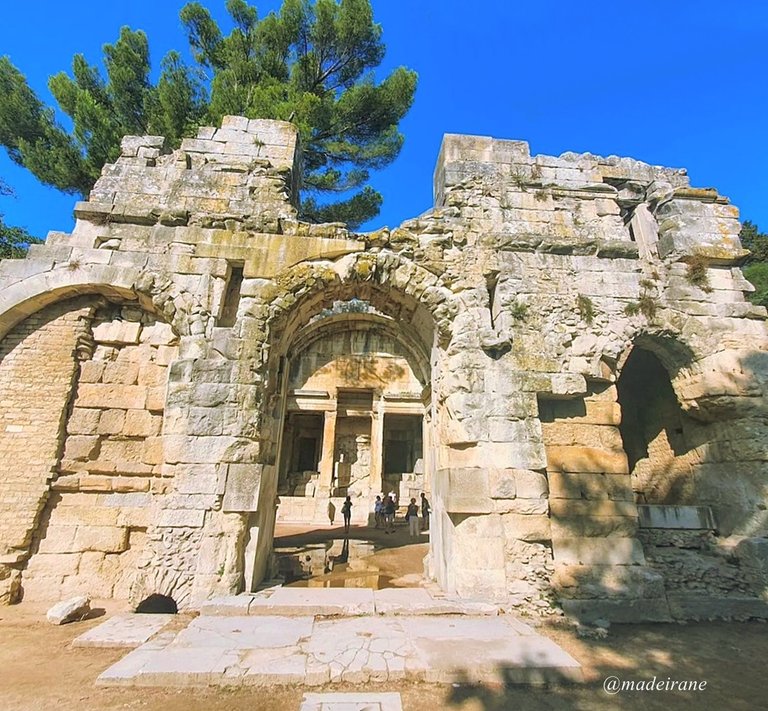
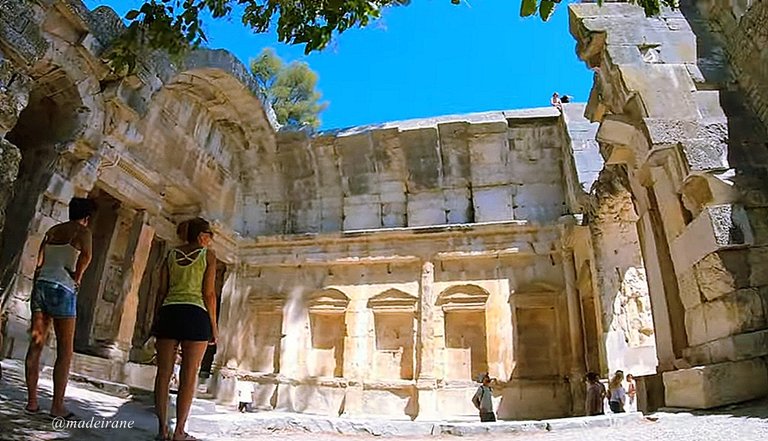
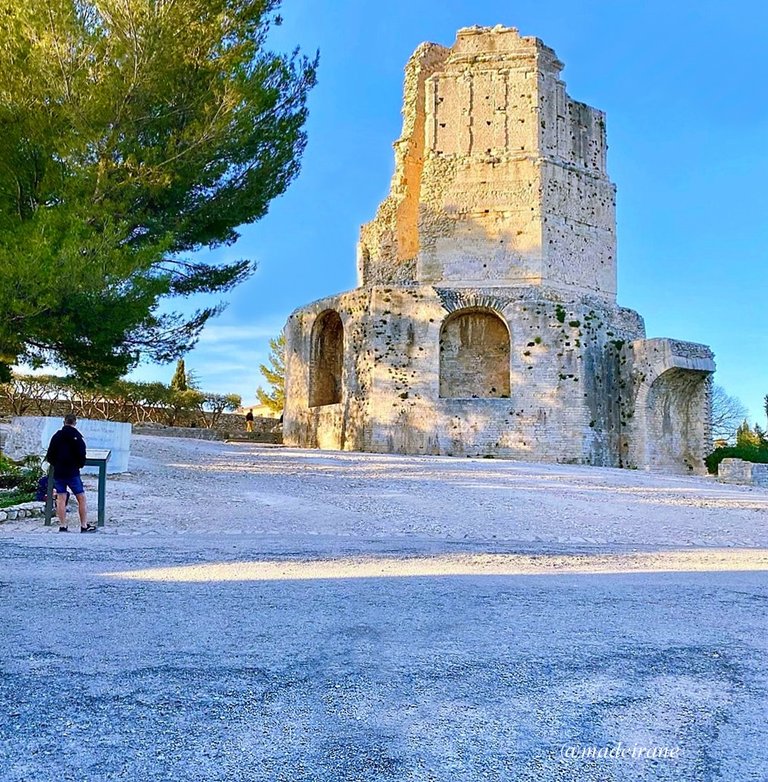
All the beautiful statues, the canal and fountains are the creations of a team of architects, sculptors and landscape designers of the 18th century, headed by the engineer Jacques-Philippe Mareschal. The result is a charming symbiosis of two cultures.
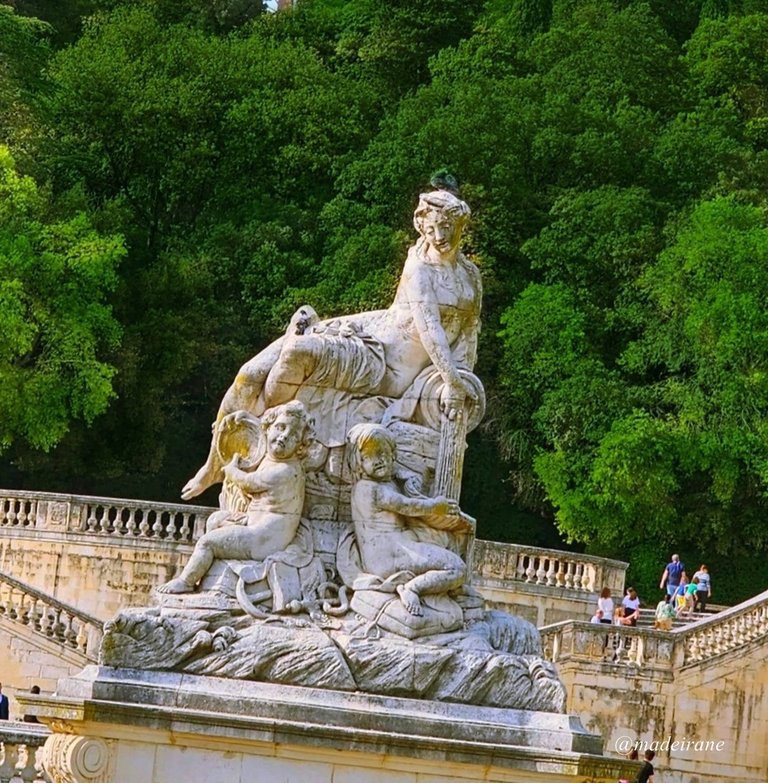
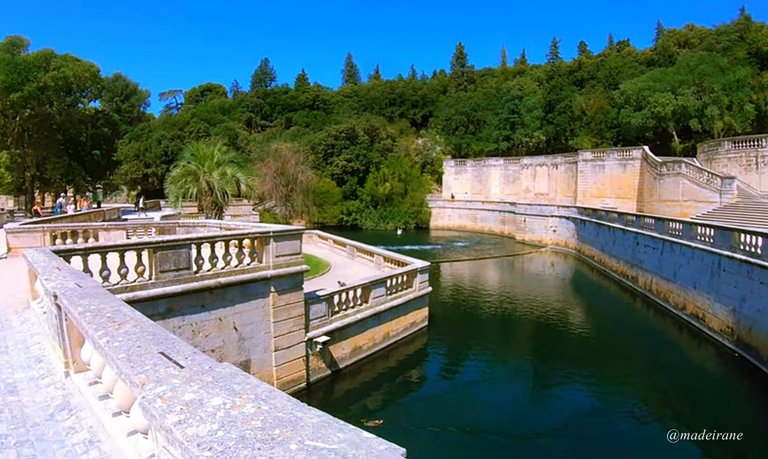
Our attention was also drawn to the sculpture and fountain composition on the Place d'Assas, which appeared there in the 1980s. Symbols of the Bible, Freemasonry, alchemy and Tarot are woven into the composition, while the separate male and female heads symbolize the yin and yang of the city of Nimes: the god Nemausus and the Nemaus Spring (near where the settlement originated).

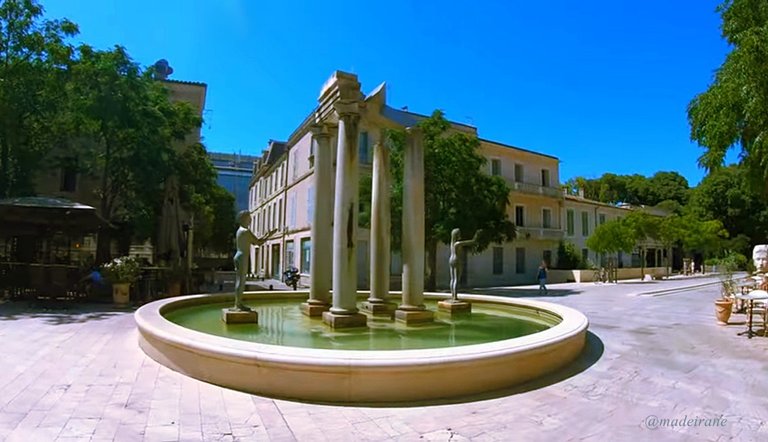
There are crocodiles. of Nile's and there are crocodiles of Nimes. One of them lives on the coat of arms of the city. Another, with the input of the artist and sculptor M. Raysse, who also "invented" the unusual fountain on the d'Assas square, settled in the fountain on the Market square. The bronze reptile receives massive popular love. The crocodile appeals to everyone: tourists of all ages and nationalities and regulars at the eateries surrounding the square.
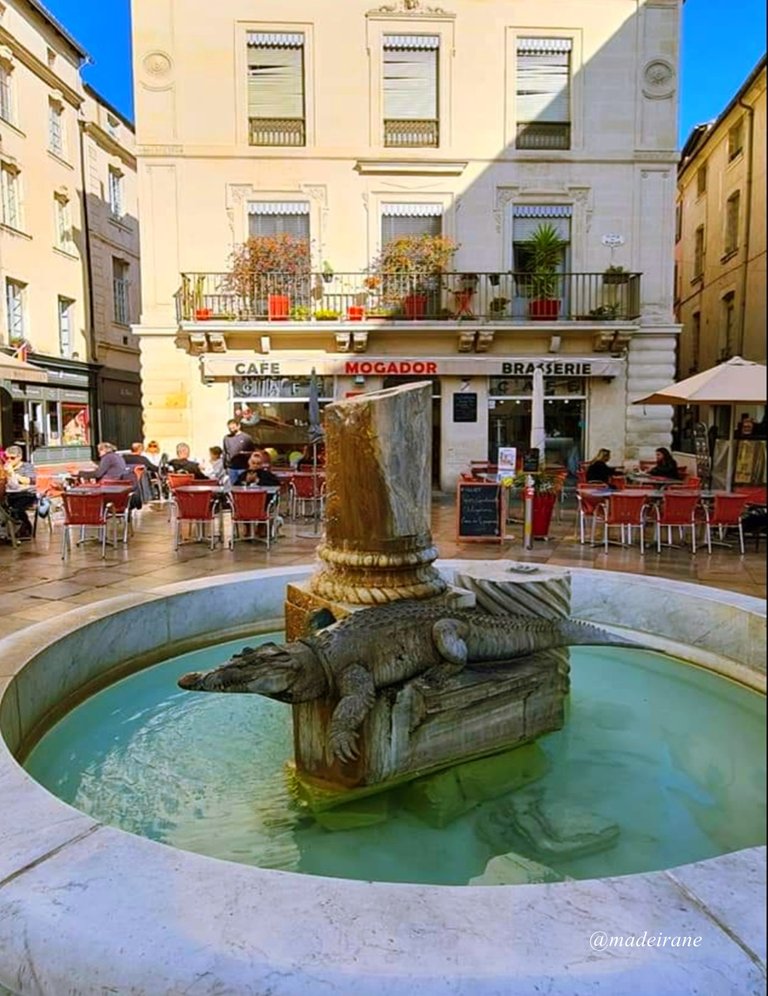
Another symbol of Nimes, although not present on the monuments, is known almost all over the world, although some people don't even know it. The name of the fabric from which the first jeans were sewn - denim - comes from the name of this city.
The crocodile is, of course, a cute little thing compared to the monument a hundred meters away. I am referring to the huge Roman amphitheater, which, for short, as in Arles, is called the Arena. This structure, which appeared in the 1st century AD, is one of the best preserved ancient amphitheaters.
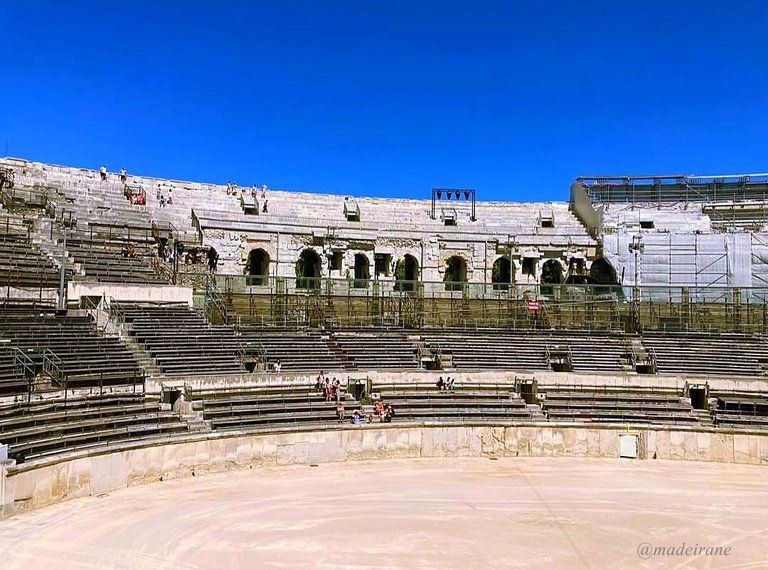

Both the degree of its preservation and the level of restoration work carried out cannot fail to impress. Really great! For that time it was a very advanced “cultural and sports complex”. The architects who created it took care of both the supply of drinking water and sewerage. I can only look at such architecture with the deepest respect. And with immense gratitude to its “authors”. It was built even for centuries, and for entire millennia.
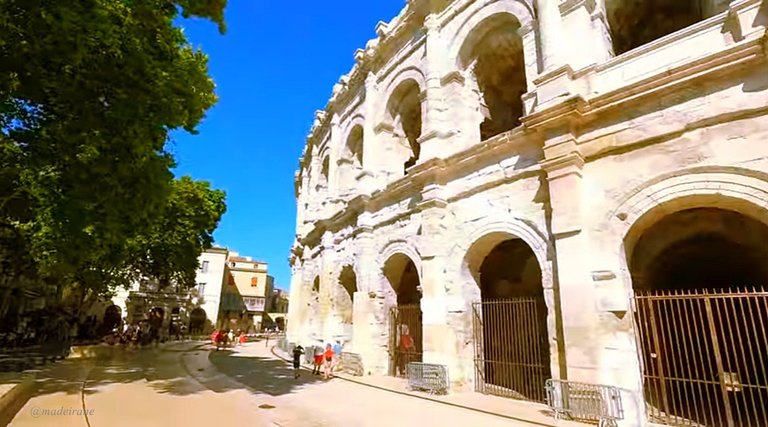
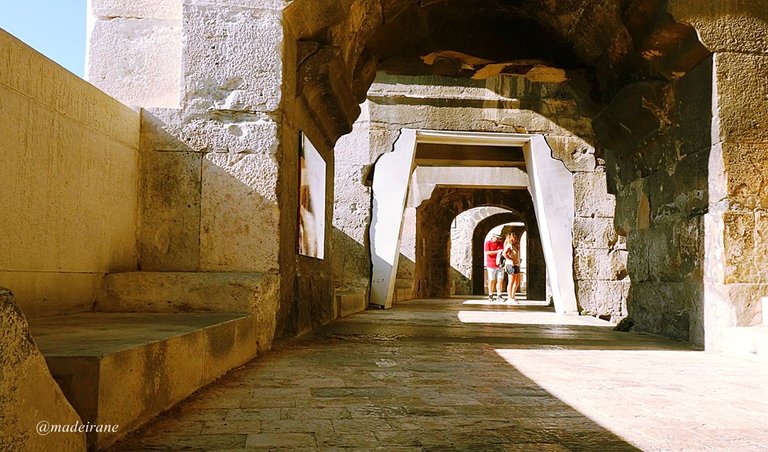
What is valuable is that on some benches there are inscriptions with the names of the patrician families who owned these places. And on the walls there are inscriptions with the names of gladiators who participated in the battles. By the way, the gladiators of Nimes were famous throughout the Mediterranean.
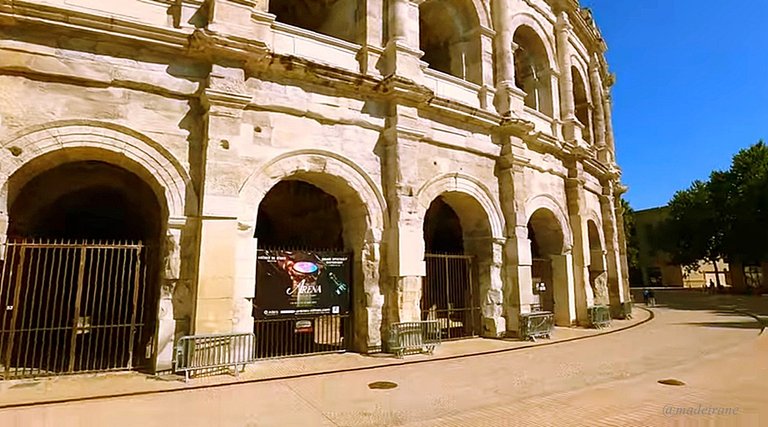
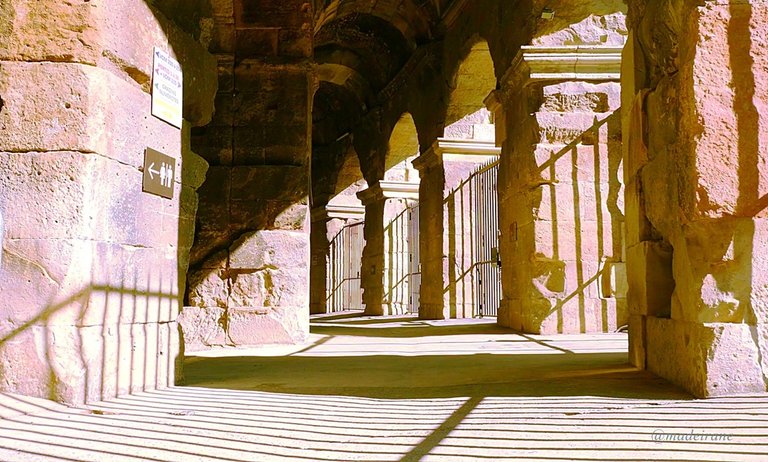
Nowadays, the Nimes Arenas are used for approximately the same purpose as the Arles Arenas: concerts, festivals, and bullfights. But this site is incomparably more prestigious than the Arles one. It featured Dire Straits, Rammstein, Metallica, Depeche Mode, and Tina Turner... And the Nimes Arena was featured in one of the first films of the outstanding French director Jean Truffaut's film Chantrap.
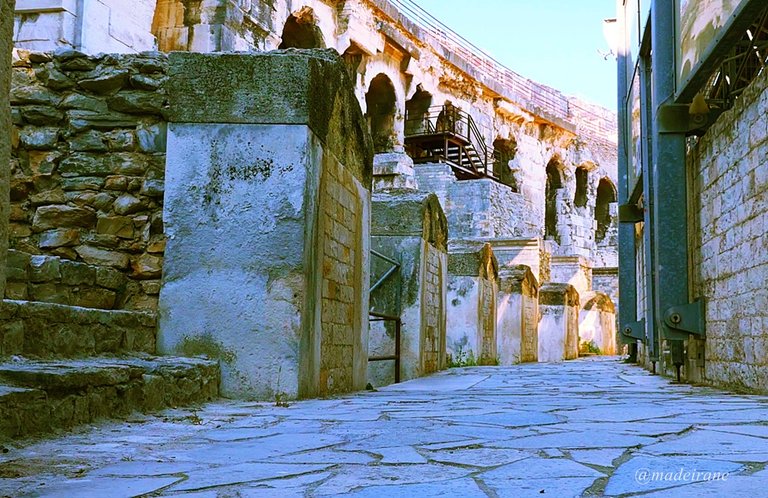
Nearby is the beautiful Pradier Fountain with a sculpture of a woman who symbolizes Nimes. The crown on her head points to the Amphitheater and to the Maison Carre. At the foot of the fountain are four springs symbolizing the four main rivers of the region.

This concludes my review of the city of Nimes. Thanks to the city for the wonderful historical atmosphere!
💝💝💝💝💝💝💝💝💝💝
With love @madeirane
Photos are taken by me.
© 2024
Gidų knygose Nimas pelnytai vadinamas "prancūzų Roma" arba "miniatiūrine Roma" dėl čia išlikusių didingų senovės romėnų architektūros paminklų. Todėl, atvykę į Provansą, su vyru natūraliai sekėme romėnų pėdsakais, paliktais Nimo gatvėse.
Prieš susipažindami su romėniškuoju Nimu, apžiūrėjome šventojo Bodilio bažnyčią, šalia kurios buvo požeminė automobilių stovėjimo aikštelė, kurioje palikome automobilį.
Šventojo Bodilo bažnyčią pavadinčiau spąstų šventykla. Pirma, galima lengvai pasimesti spėjant jos amžių. Manote, kad matote viduramžius ir gotiką, o iš tikrųjų tai XIX a. paskutinio ketvirčio neogotika. O antra, kažkodėl jos interjeras jus "veža".
Atrodytų, kad čia yra gana tikėtinų stilistinių bruožų, gana nuspėjamo griežtumo ir asketiškumo, visiškai įprasta vitražų grupė, bet vis dėlto norisi pasilikti.
Iš tikrųjų mūsų kelionė po Provansą buvo kelionė per buvusios romėnų provincijos, vadintos Narbono Galija, teritoriją, o Nimas buvo jos sostinė. Ir jei dieną prieš tai su vyru susipažinome su Arelatu (su dabartiniu Arliu), tai apsilankymas Nimes buvo apsilankymas buvusiame Nemause.
Aha, štai pirmieji romėnų pėdsakai mūsų maršrute... Gal ne tokie įspūdingi kaip vėlesni, bet vis tiek pastebimi ir įtikinami. Augusto vartai ir senovinės tvirtovės sienos fragmentai.
Už šių vartų arkų galima pamatyti patį imperatorių Augustą - žinoma, jo statulą. Jam Nimas skolingas už savo sostinės statusą ir klestėjimą.
Netrikdydami Oktaviano Augusto ramybės (galiu įsivaizduoti, kaip jis buvo pavargęs nuo šimtų ekscentriškų ir keistai apsirengusių žmonių iš jam nepažįstamų šalių), pajudėjome link istorinio centro gatve, į kurią rodė jo ranka.Ši maršruto atkarpa dar nesudarė jokio įspūdžio apie Nimą kaip savarankišką teritorinį vienetą: prieš akis turėjome Provansui būdingą architektūrą, o Nimui būdingi bruožai dar nebuvo išryškėję.Ši maršruto atkarpa dar nesudarė jokio įspūdžio apie Nimą kaip savarankišką teritorinį vienetą: prieš akis stovėjo tipiška Provanso architektūra, o Nimui būdingi bruožai dar nebuvo išryškėję.
Tačiau mūsų laukė dideli dalykai. Atsidūrėme mergelės Marijos ir Švento Kastoro katedroje. Skirtingai nei Švento Baudile bažnyčia, jos istorija siekia XI a., t. y. joje vyrauja romaninis, gotikinis ir barokinis stiliai.
Už kampo stovi vienas iš Nimo pasididžiavimų - puikiai išsilaikęs senovės romėnų architektūros paminklas, vadinamasis Kvadratinis namas. Kvadratinis namas, nors de facto jis yra ne kvadratinis, o stačiakampis, yra buvusi šventykla, pastatyta mirusių imperatoriaus Oktaviano Augusto vaikaičių Lucijaus ir Gajaus garbei. Išlikusias tokios būklės senovės romėnų šventyklas galima suskaičiuoti ant vienos rankos pirštų.
O juk namui, tiksliau, šventyklai, daugiau nei du tūkstančiai metų! Stovite ir žavitės kiekvienos detalės kilnumu: šis portikas, šios kolonos, šie ornamentai... Mano nuomone, tai architektūros tobulumo pavyzdys. Kai nieko nereikia nei pridėti, nei atimti.
Ką jums primena "Maison Carree"? Teisingai: garsiąją Paryžiaus Madlenos bažnyčią. Ir, beje, ne tik Madleną. Maison Carree išvaizdos elementai atkartoti daugelyje naujųjų laikų Prancūzijos pastatų.
Prisimindamas "poromėniškąjį" Kvadratinio namo gyvavimo laikotarpį, priėjau prie išvados, kad jis išliko pirmiausia dėl savo formos. Tokiame pastate buvo galima sutalpinti bet ką: krikščionių bažnyčią, teismą, administracines institucijas ir, deja, arklides. Šiuo metu Maison Carree naudojamas kaip parodų salonas.
O tai - garsaus britų architekto Normano Fosterio iš tolimos ateities atsiųstas sveikinimas senovės Romos architektams. Šiame pastate, pavadintame Carre d'Art (Meno aikštė), įsikūręs šiuolaikinio meno muziejus ir biblioteka.
Žingsnis po žingsnio išryškėja Nimo vaizdas. Apskritai man buvo labai malonu vaikščioti po šį miestą. Man tai buvo atpalaiduojantis miestas.
Palei kanalus driekiasi pavėsingi bulvarai, tankiai apsodinti platanais. Gražios ir jaukios aikštės su įdomiais fontanais. Namai su elegantiškais kaustytos geležies balkonais ir langų grotomis. Seno ir naujo egzistavimo harmonija. Beveik jokio šokiruojančio blogo skonio. Ir, nepaisant to, kad čia lankosi nemažai lankytojų, visiškai nėra šurmulio.
Nedvejodamas pirmąją vietą maloniausių Nimo kampelių sąraše skiriu Fontanų sodui.
Fontanų sode susipina antikos laikų architektūros tradicijos ir XVIII a. kraštovaizdžio dizainas. "Nuo romėnų" jame yra II a. Dianos šventyklos griuvėsiai (atkreipkite dėmesį, kad pagal kitą versiją tai ne šventykla, o terminės pirties griuvėsiai), o aukštai ant kalvos stovi Žmogaus bokštas.
Gražios statulos, kanalas ir fontanai - tai XVIII a. architektų, skulptorių ir kraštovaizdžio dizainerių komandos, kuriai vadovavo inžinierius Žakas Filipas Marešalas (Jacques-Philippe Marechal), darbas. Rezultatas - žavi dviejų kultūrų simbiozė.
Taip pat atkreipėme dėmesį į skulptūrą ir fontano kompoziciją Asaso aikštėje, kuri čia atsirado devintajame dešimtmetyje. Kompozicijoje įkomponuoti Biblijos, masonerijos, alchemijos ir taro simboliai, o atskiros vyro ir moters galvos simbolizuoja Nimo miesto yin ir yang: dievą Nemausą ir Nemauso šaltinį (netoli kurio atsirado gyvenvietė).
Yra Nilo krokodilai ir yra Nimes krokodilai. Vienas iš jų gyvena miesto herbe. Kitas, prisidėjus dailininkui ir skulptoriui M. Raysse'ui, kuris "sugalvojo" ir mano minėtą neįprastą fontaną d'Asso aikštėje, įsikūrė fontane turgaus aikštėje. Bronzinis roplys sulaukia masinės liaudies meilės. Krokodilas patinka visiems: įvairaus amžiaus ir pilietybės turistams ir nuolatiniams aikštę supančių maitinimo įstaigų lankytojams.
Kitas Nimo simbolis, nors jo nėra ant paminklų, yra žinomas beveik visam pasauliui, nors kai kurie net neįtaria. Audinio, iš kurio buvo pasiūti pirmieji džinsai, pavadinimas - denimas - kilo iš šio miesto pavadinimo.
Krokodilas, žinoma, miela nesąmonė, palyginti su už šimto metrų esančiu paminklu. Turiu omenyje didžiulį romėnų amfiteatrą, kuris trumpai, kaip ir Arlyje, vadinamas Arena.
Šis statinys, atsiradęs I mūsų eros amžiuje, yra vienas geriausiai išsilaikiusių antikinių amfiteatrų.
Tiek jo išsaugojimo laipsnis, tiek atliktų restauravimo darbų lygis negali nedaryti įspūdžio. Tikrai nuostabu! Savo laikmečiui tai buvo labai pažangus "kultūros ir sporto kompleksas". Jį kūrę architektai pasirūpino ir geriamojo vandens tiekimu, ir kanalizacija.
Į tokią architektūrą galiu žiūrėti tik su didžiausia pagarba. Ir su didžiuliu dėkingumu jos "autoriams". Juk ji buvo statoma net šimtmečius ir ištisus tūkstantmečius.
Vertinga tai, kad ant kai kurių suolų yra užrašai su patricijų šeimų, kurioms priklausė šios vietos, vardais. O ant sienų yra užrašai su kovose dalyvavusių gladiatorių vardais. Beje, Nimo gladiatoriai garsėjo visoje Viduržemio jūros regione.
Šiuo metu Nimo arena naudojama maždaug tokiam pačiam tikslui kaip ir Arlio arena, t. y. koncertams, festivaliams ir bulių kovoms. Tačiau ši vieta yra nepalyginamai prestižiškesnė už Arlio areną. Čia koncertavo "Dire Straits", "Rammstein", "Metallica", "Depeche Mode" ir Tina Turner... O Nimo arena buvo parodyta viename pirmųjų žymaus prancūzų režisieriaus Jeano Truffaut filme "Šantrapas".
Tuo baigiu savo apžvalgą apie Nimo miestą. Ačiū miestui už nuostabią istorinę atmosferą!
Translated with DeepL.com (free version).
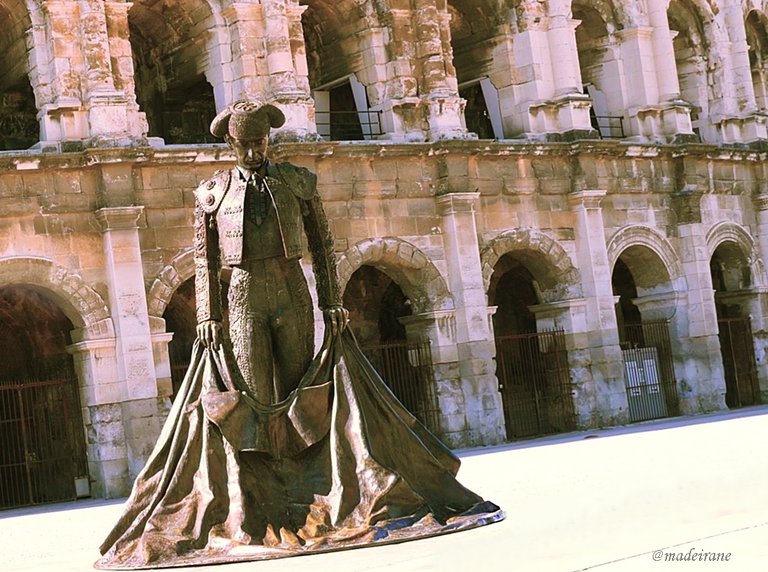
I also read some of the stories about this place and it is very historical. I think Matador, the Man who waves red pieces of cloth to the ox or male cow also did here in this country. For me, this place is amazing.
I think, You are right. And yes, this place is amazing for those who love history.
The place looks very historical, I would be very happy if I had the opportunity to take a walk there
Maybe one day you will have such an opportunity. We never know...
Congratulations @madeirane! You have completed the following achievement on the Hive blockchain And have been rewarded with New badge(s)
Your next target is to reach 80 posts.
You can view your badges on your board and compare yourself to others in the Ranking
If you no longer want to receive notifications, reply to this comment with the word
STOPTo support your work, I also upvoted your post!
Check out our last posts:
Congratulations, your post has been added to Pinmapple! 🎉🥳🍍
Did you know you have your own profile map?
And every post has their own map too!
Want to have your post on the map too?
Congratulations @madeirane! Your post made the TravelFeed team happy so we have sent you our big smile. Keep up the good job. 😃
Thanks for using TravelFeed!
@for91days (TravelFeed team)
PS: Why not share your blog posts to your family and friends with the convenient sharing buttons on TravelFeed?